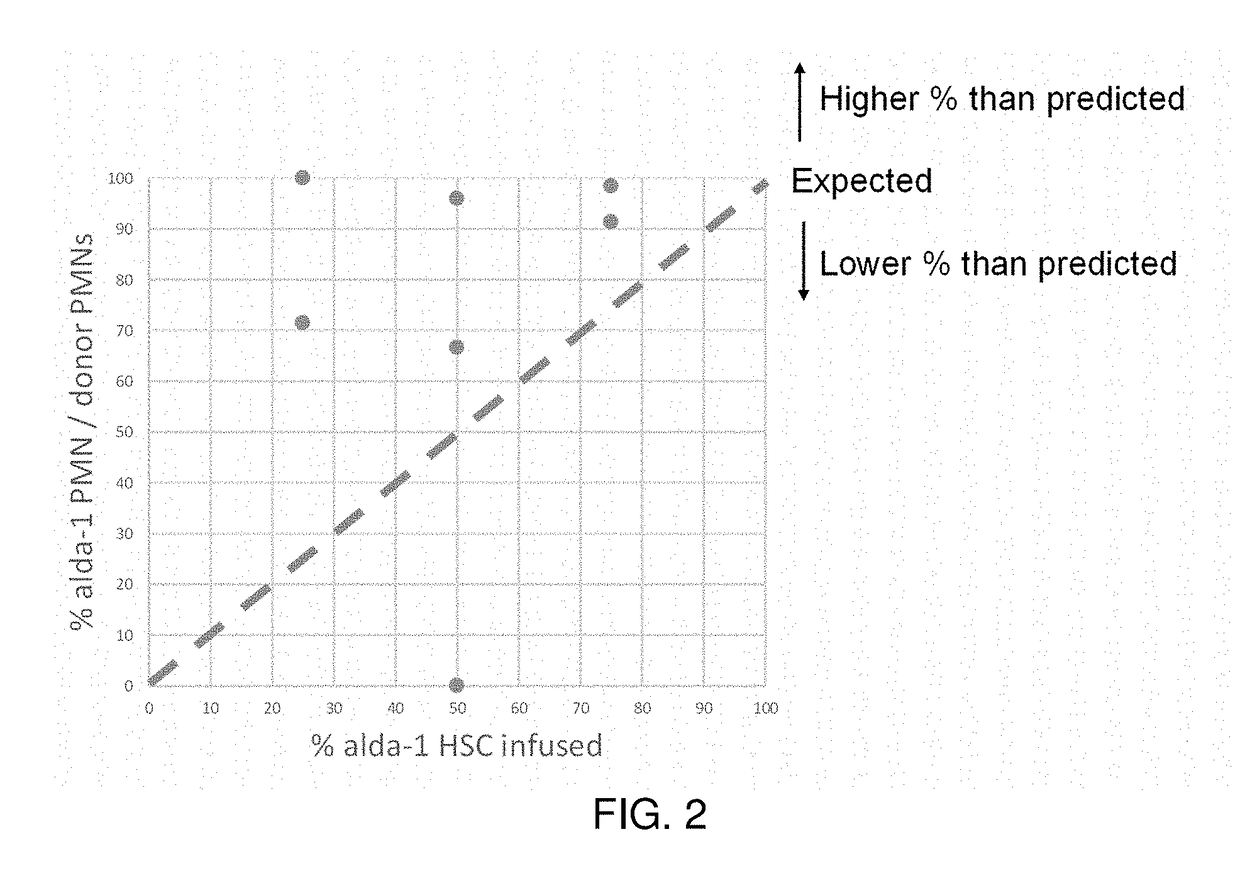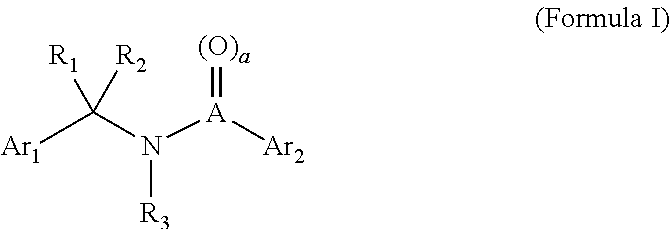Mitochondrial aldehyde dehydrogenase-2 modulators for protecting, expanding and increasing the potency of hematopoietic stem cells
a technology of hematopoietic stem cells and mitochondrial aldehyde dehydrogenase, which is applied in the direction of active genetic ingredients, heterocyclic compound active ingredients, gene material ingredients, etc., can solve the problems of patients not receiving treatment, the pathological impact of such treatments on rapidly dividing normal cells, and the limited hsc transplantation applications to date, etc., to increase the potency of hematopoietic cells, increase the potency of hematopo
- Summary
- Abstract
- Description
- Claims
- Application Information
AI Technical Summary
Benefits of technology
Problems solved by technology
Method used
Image
Examples
example 1
Interferon Stress in HSCs in Response to Increased Aldehydic Load
[0179]DNA interstrand cross-links (ICL), which are normally repaired by the Fanconi Anemia (FA) complex gene products, can be induced by reactive aldehydes, e.g., acetaldehyde. A hypomorphic missense mutation of Aldehyde Dehydrogenase 2 (ALDH2) found in ˜560 million people worldwide results in decreased ability to metabolize acetaldehyde and other toxic aldehydes. The ALDH2*2 genotype causes the well-known disulfiram-like “Asian flushing syndrome” observed after ethanol ingestion, but also increased susceptibility to cancer, higher risk of aplastic anemia and more rapid progression to marrow failure in children with FA.
[0180]The effects of increased aldehydic load in HSC, resulting from genetic variation (ALDH2 *2) and environmental exposure (ethanol challenge to increase aldehydic load) were studied. Hematopoietic stem and progenitor cells (HSPCs) from wild type (WT) and ALDH2*2 / *2 mice were serially examined between ...
example 2
ALDH2 Activator Protects and Expands HSCs In Vivo
[0184]Mice (wild-type C57BL / 6N were administered with Alda-1 (10 mg / kg.day) or vehicle control (50% DMSO / 50% PEG-400) by continuous infusion via subcutaneous osmatic pumps for 3 months.
[0185]Vehicle control and Alda-1 treated mice were then analyzed for HSC functionality. The mice treated with Alda-1 demonstrated significant HSC expansion. It was observed that mice treated with Alda-1 exhibited a 4-fold increase in (LT)-HSCs (FIG. 1A) and mice treated with Alda-1 exhibited a 2-fold increase in (ST)-HSCs (FIG. 1B). With reference to FIG. 1A and FIG. 1B, error bars show standard deviation, significance computed with Student's t-test. *=p≤0.05. In summary, chronic Alda-1 administration was well tolerated in vivo and resulted in expansion of HSC.
example 3
ALDH2 Activator Increases the Repopulating Potential of HSCs
[0186]To measure the effects of ALDH2 activation on HSC potency, recipient mice were transplanted with purified HSCs from two donors, one of which had received Alda-1 prior to collection of HSCs for transplant, and another of the same strain which had not received Alda-1 prior to collection for transplant. The two donors were genetically the same except for a difference in the CD45 gene, which allows the blood cells from each to be distinguished from each other and the recipient.
[0187]The Alda-1 treated donor had received Alda-1 subcutaneously for 2 months prior to HSC collection. The cells from the treated and untreated donors were mixed together prior to transplant at fixed ratios of 1:3 (25%), 1:1 (50%), or 3:1 (75%). A total of 3000 HSCs were given intravenously to immunodeficient (γc- / - KitW41 / W41) mice after low dose irradiation. The polymorphonuclear neutrophils (PMN, aka granulocytes) in each recipient mouse were te...
PUM
 Login to View More
Login to View More Abstract
Description
Claims
Application Information
 Login to View More
Login to View More - R&D
- Intellectual Property
- Life Sciences
- Materials
- Tech Scout
- Unparalleled Data Quality
- Higher Quality Content
- 60% Fewer Hallucinations
Browse by: Latest US Patents, China's latest patents, Technical Efficacy Thesaurus, Application Domain, Technology Topic, Popular Technical Reports.
© 2025 PatSnap. All rights reserved.Legal|Privacy policy|Modern Slavery Act Transparency Statement|Sitemap|About US| Contact US: help@patsnap.com



